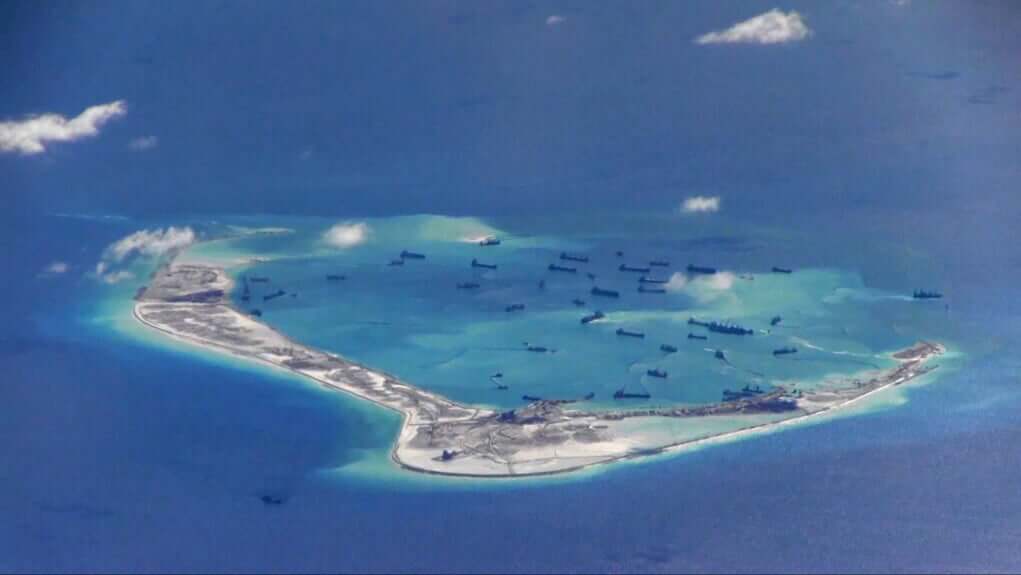As is well-known, South China Sea disputes are a territorial dispute among several countries including China, Taiwan, Brunei, the Philippines and Malaysia. But the disputes have turned to be one of the most notable global geopolitical issues and made the region a major global geopolitical hot-spot in recent years. In fact, many countries — within and outside of the region — including China and the USA are involved with the geopolitics regarding the South China Sea, which is crucial for economic and other reasons. Though tensions between China and both the Philippines and Vietnam have recently cooled, a vital question remains on whether such disputes can lead to any large-scale military war in the region and/or beyond.
Of course, the South China Sea disputes began a few decades back. In fact, as early as the 1970s, countries began to claim islands and various zones in the South China Sea, such as the Paracel Islands, the Scarborough Shoal, and the Spratly Islands that possess rich natural resources including oil and gas and have large fishing areas. As it appears, Vietnam claims sovereignty over the Paracel and Spratly islands, while the Philippines asserts ownership of the Spratly archipelago and the Scarborough Shoal. In fact, the Paracels are known in China as the Xisha and Vietnam as the Hoang Sa. But China’s recent occupation of several islands including the Spratly raised a cause of concerns among other claimants.
But disputes have increased in recent years involving many other countries outside the region including the USA. Whereas China built an artificial Island in 2016 which has now military facilities and troops, the USA increasingly started freedom of navigation in the South China Sea, one of the world’s busiest waterways through which one-third of the global shipping, or about US$3.37 trillion in international trade as reports SCMP, passes each year. Though the USA has not directly supported any other claimants, it has stepped up its military presence by sending warships and military aircraft to keep tabs on China’s activities regarding the disputed islands in recent years. For several times, fighter jets of the two countries such as China and the USA have come closer over the disputed Islands.
The escalation between the USA and China in the future is not surprising at all. In fact, one of the main aims of China is to increase its influence in the entire Asian region that can be facilitative to its ultimate goal of becoming a global hegemon. On the other hand, the USA which aims at containing the rising China, which is economically and militarily a powerful country and is rendered as a significant threat to the USA, says that Beijing’s claims to offshore resources across most of the South China Sea are completely unlawful. Moreover, the USA has wide-ranging security commitments in East Asia and is allied with several countries bordering the sea, including the Philippines, Singapore and Vietnam.
But an important point remains on whether disputes can be resolved. It is difficult to be certain when and how much disputes will be resolved, though the possibility remains, at least somewhat. In fact, claimants have not made any significant efforts to solve the disputes. Moreover, the arbitration of the disputed islands by the Permanent Court of Arbitration in Hague in response to a complaint by the Philippines has not resolved the crisis. As it appears, the court said in 2016 that Chinese action violated the freedom of navigation guaranteed by the UN Convention on the Law of the Sea, although it did not rule on the ownership of the islands. But China, a party to the UN treaty, rejected such jurisdiction. China rather continues its efforts to occupy the disputed islands creating discontents among other claimants.
Moreover, there are no notable efforts to resolve geopolitical rivalry between China and the USA regarding the South China Sea disputes. Even if these countries do not intend to wage a war (or do not say of possible war against each other), there is no visible sign of reducing tensions that can possibly lead to an unintentional war. Also, some activities of these countries are rather at the opposite. Along with the increased military presence, both countries are sometimes engaged in a war of words. Besides, there are some other recent developments — including trade war and increased geopolitical rivalry — that can reduce the chance of the mitigation of disputes between the countries.
But it is, indeed, undeniable that direct war especially between the USA and China can be devastating for the entire region and beyond. In fact, both the USA and China are militarily powerful and capable of bringing enormous devastation. Both the countries have a nuclear arsenal and, moreover, the involvement of allied countries with the war is not unlikely at all. Even if any military war is primarily held between China and any other claimant of the Sea (rather than between the USA and China), the involvement of the USA and its allied countries may not be discarded altogether because of the USA’s security pacts (noted above). If nuclear weapons are used by any party by accident, overall impacts can be easily imaginable.
It is, thus, desired that direct war is avoided regarding the South China Sea disputes. In this respect, all the claimants, including China and the USA need to come to a position so that they can avert direct war. Of course, all countries should act reflecting responsibility. But the USA and China need to do something more about this. This is because other countries may be less likely to get engaged with a war against China without any support from the USA and/or other global powers since there are enormous power imbalances between China and other claimants. Both the USA and China need to reduce military presence in the sea. While China needs to avoid the militarization of the disputed islands, the USA needs to reduce its military exercises. Besides, emphasis on diplomacy may help avoid war.
But it is undeniable that South China Sea disputes cannot be resolved unless all claimants get their deserved share. Currently, China claims almost 90 percent of the disputed areas leaving others deprived of their share. Even though some of the islands are now controlled by other claimants of the sea and other claimants including Vietnam and China have been working for years with the Association of Southeast Asian Nations on a Code of Conduct that might finally resolve the regional dispute, this is not enough for solving the crisis and securing fair share. Extensive multi-lateral efforts among disputed countries directly or through the ASEAN may be helpful. But China needs to realize that forceful occupation of disputed islands can only increase disputes and all claimants should get their deserved share.
Not less important is the fact that the United Nations may play some important roles in the mitigation of disputes among claimants and securing a deserved share of the disputed sea. In this respect, the United Nations may form a higher-powered commission on the disputed South China Sea. But, of course, earnest cooperation from all claimants including China and all global powers including the USA and Russia is very important.














Comments are closed.